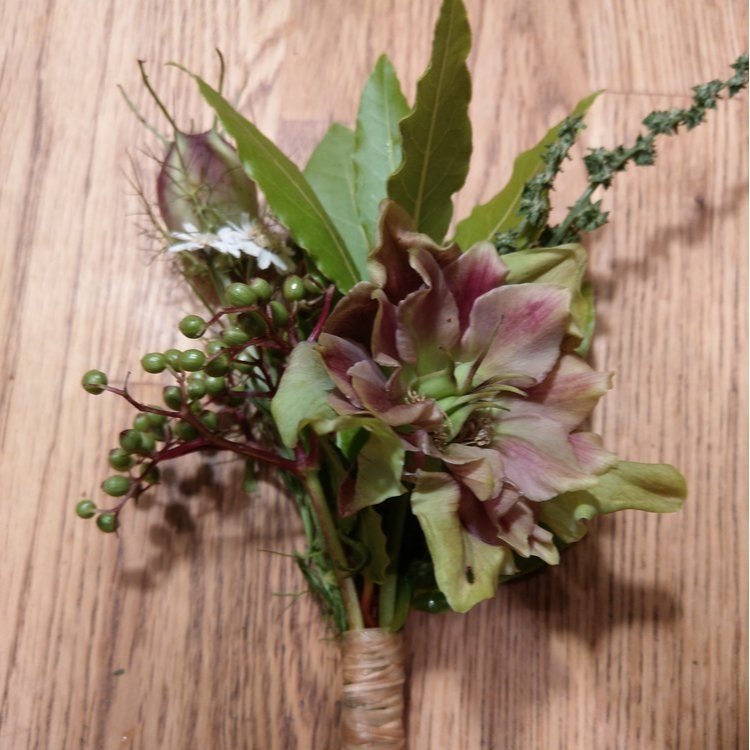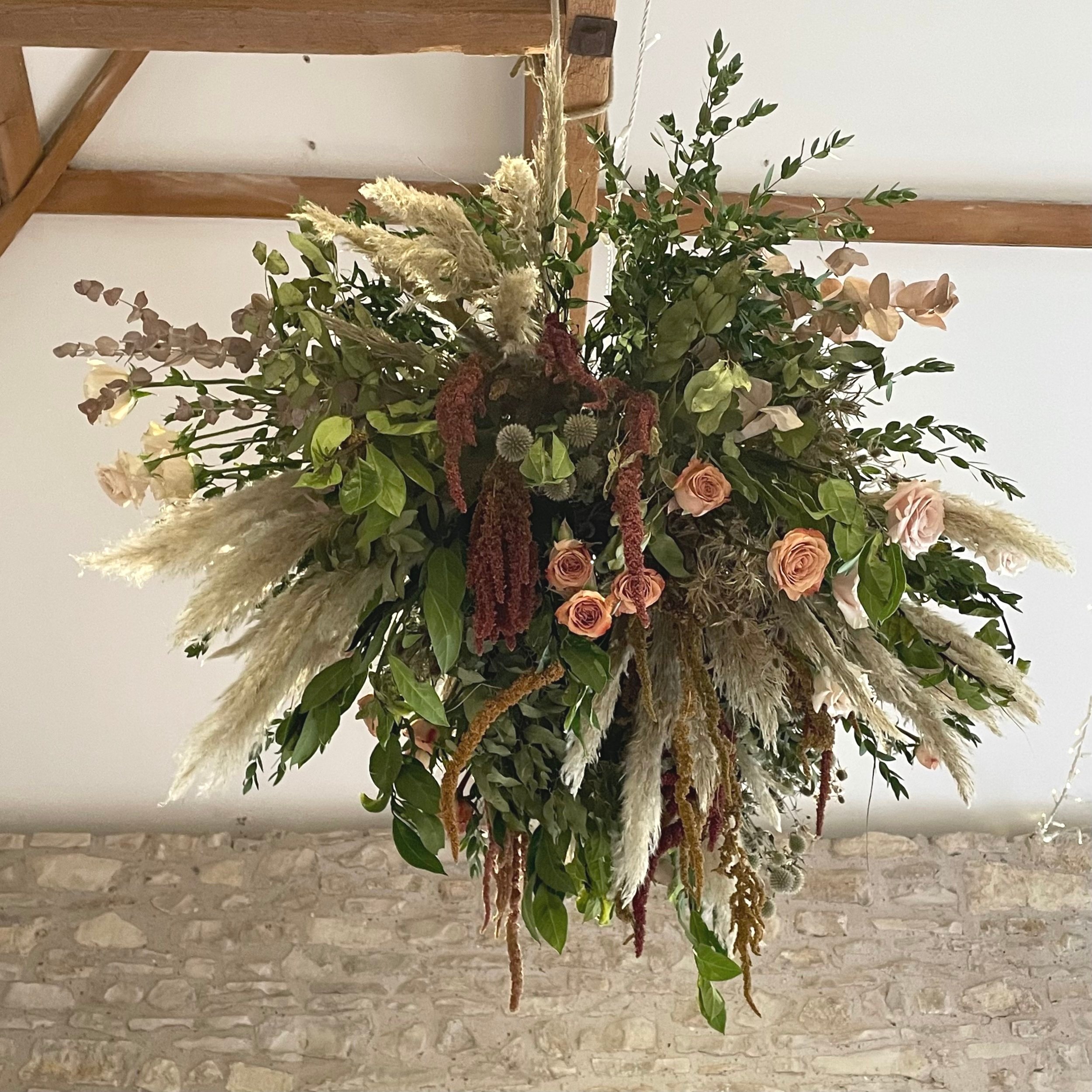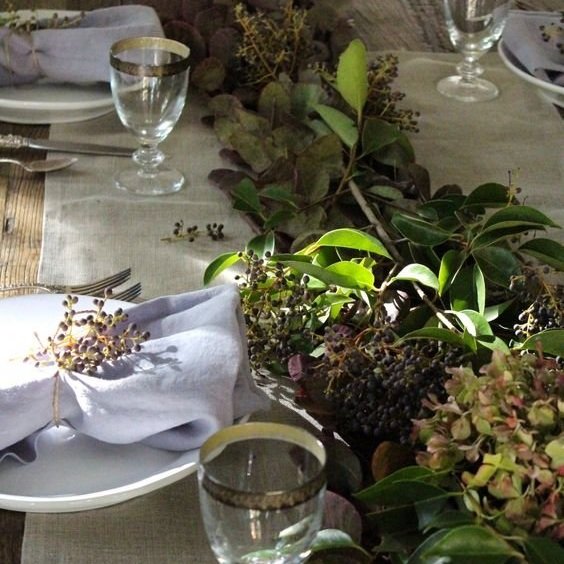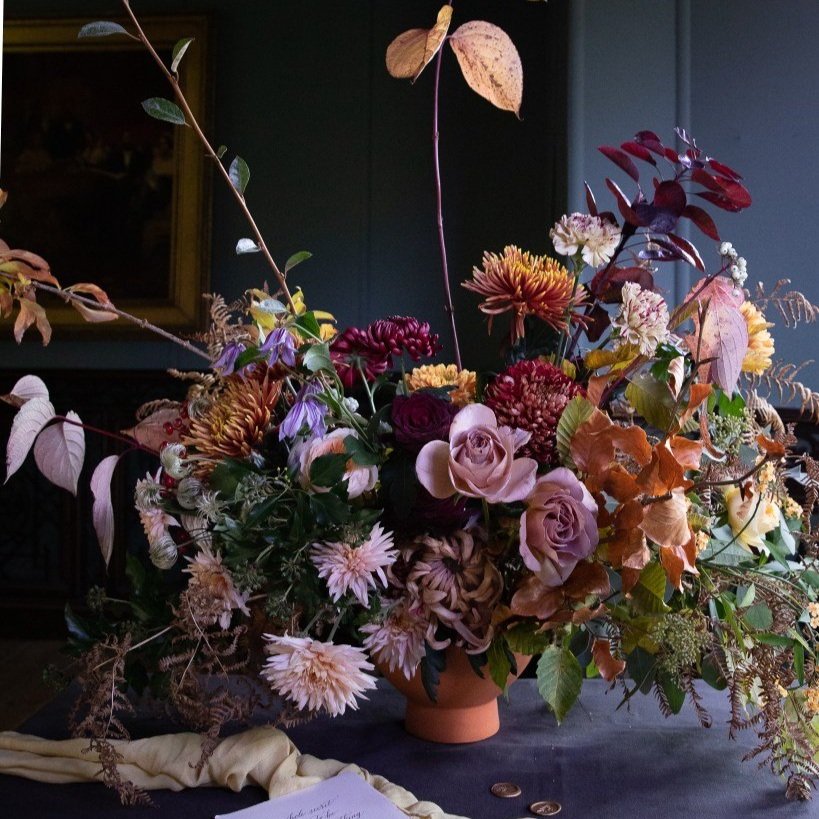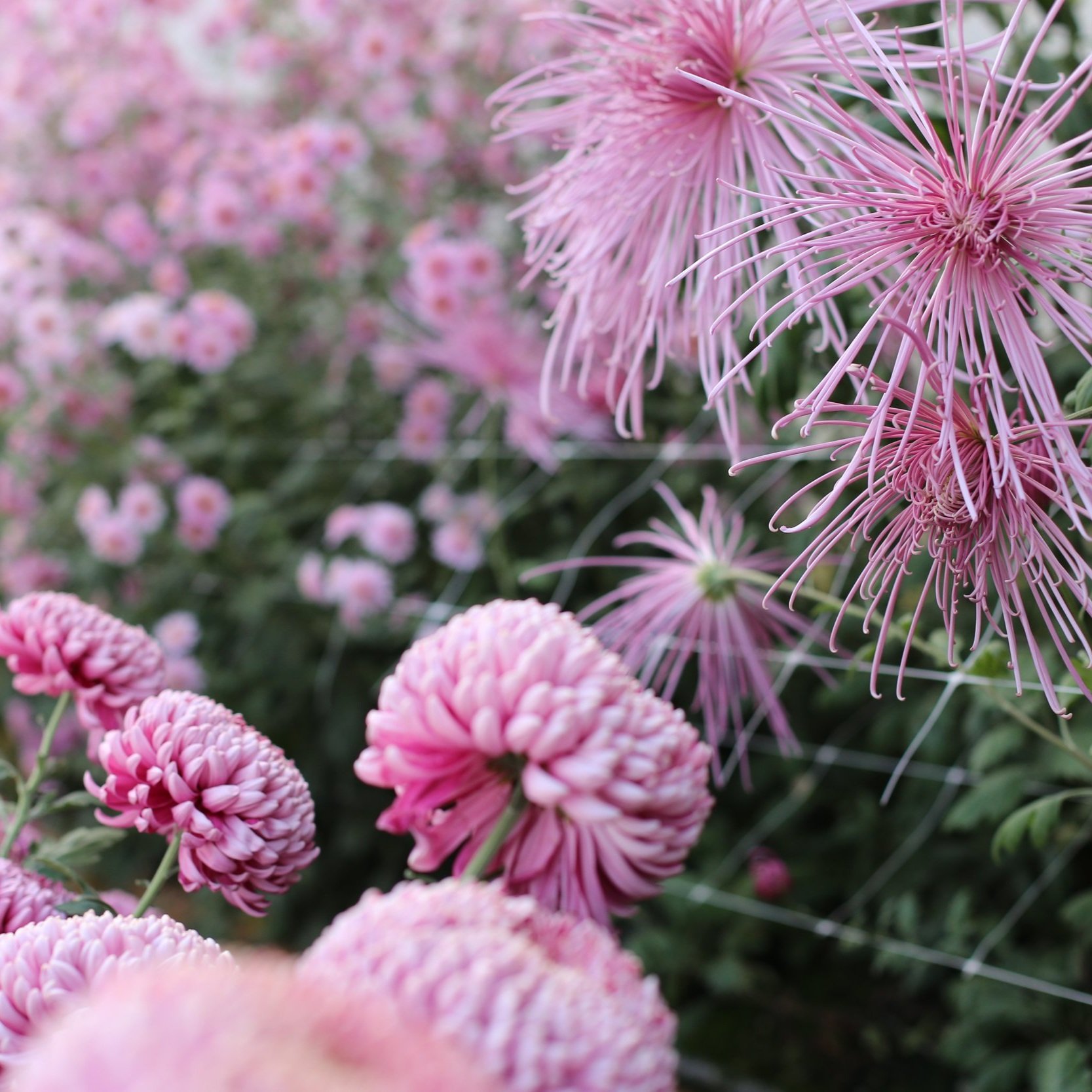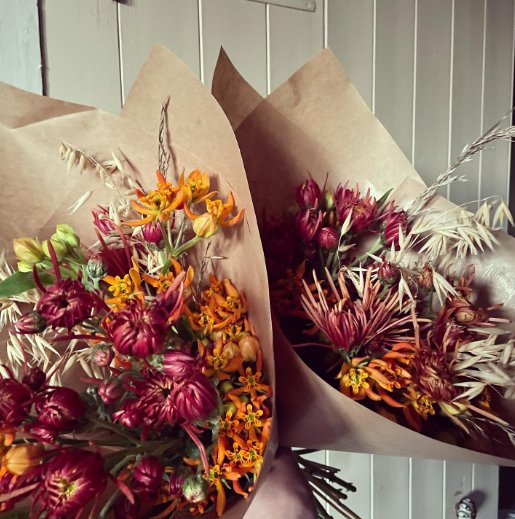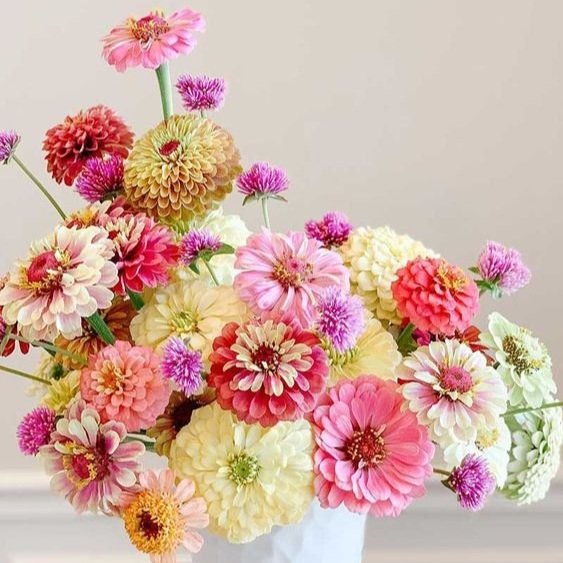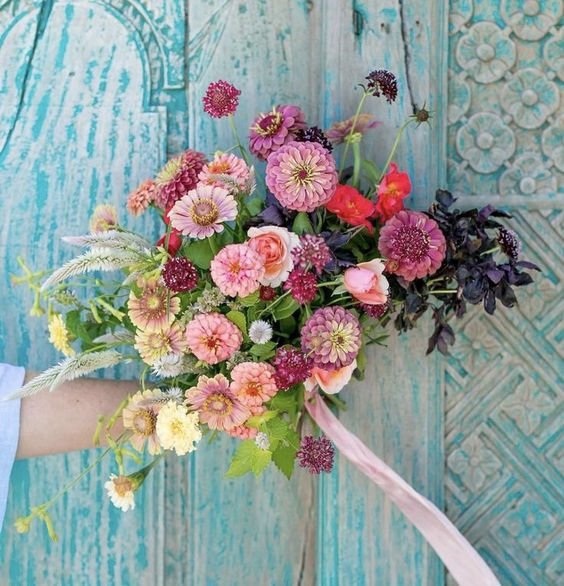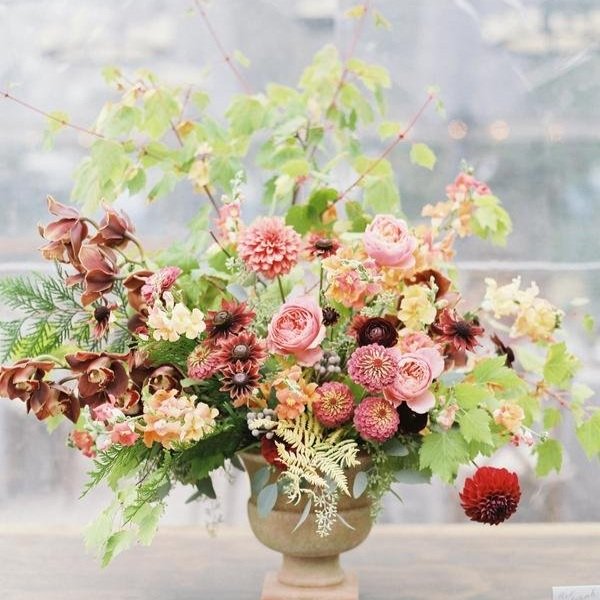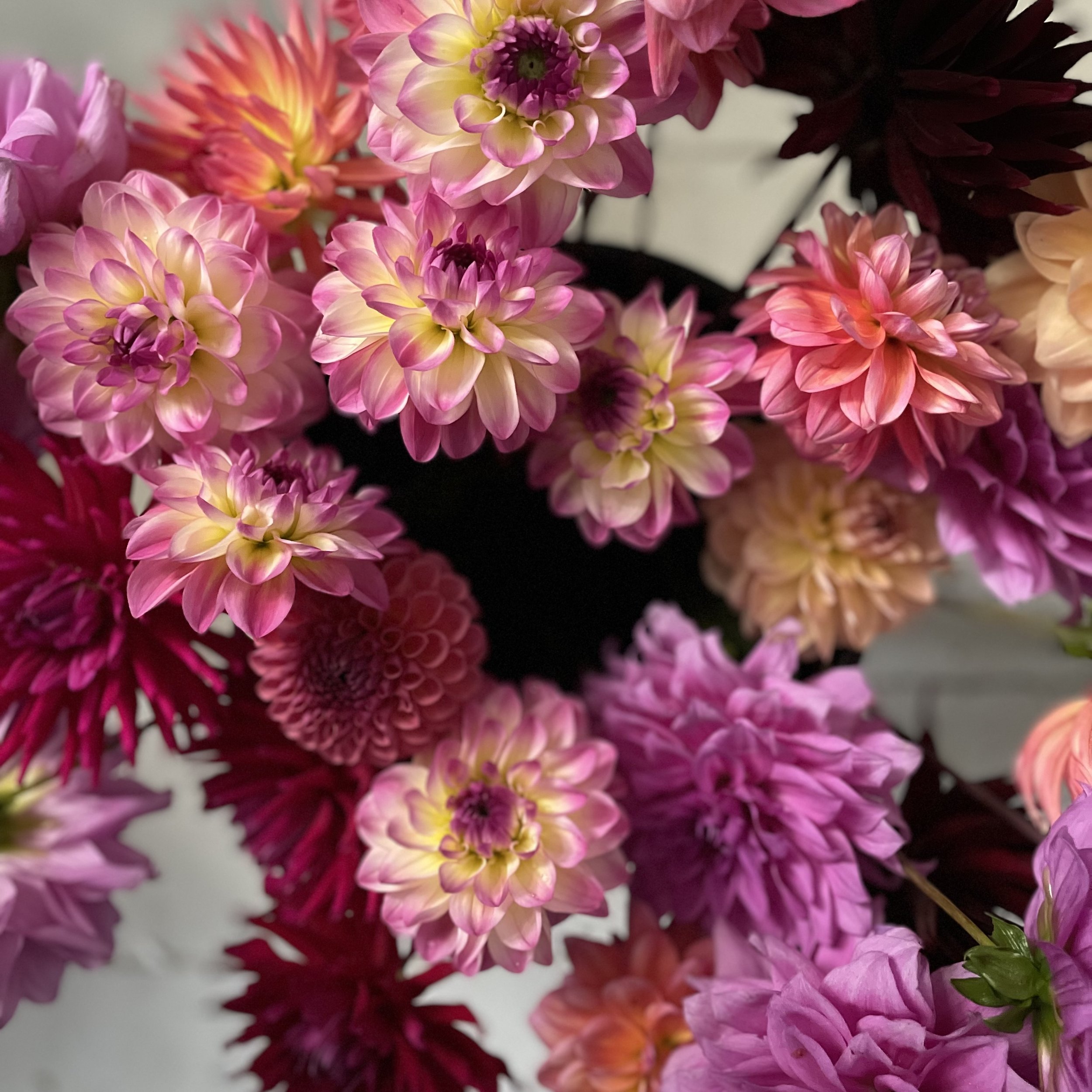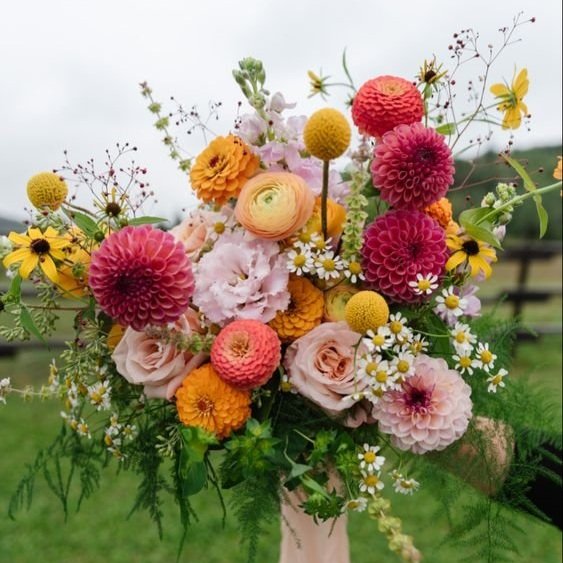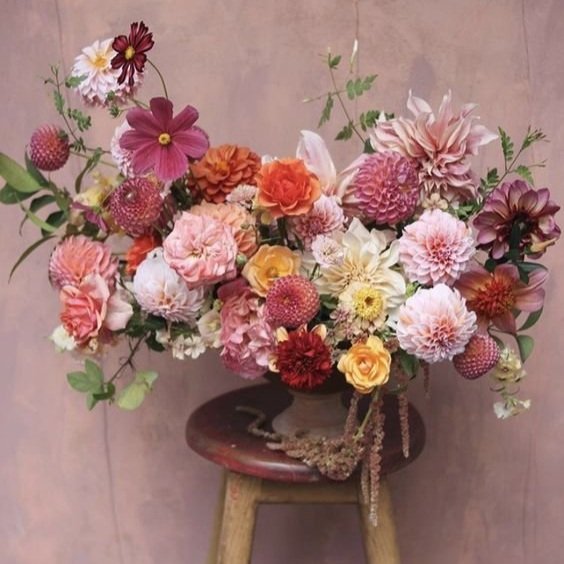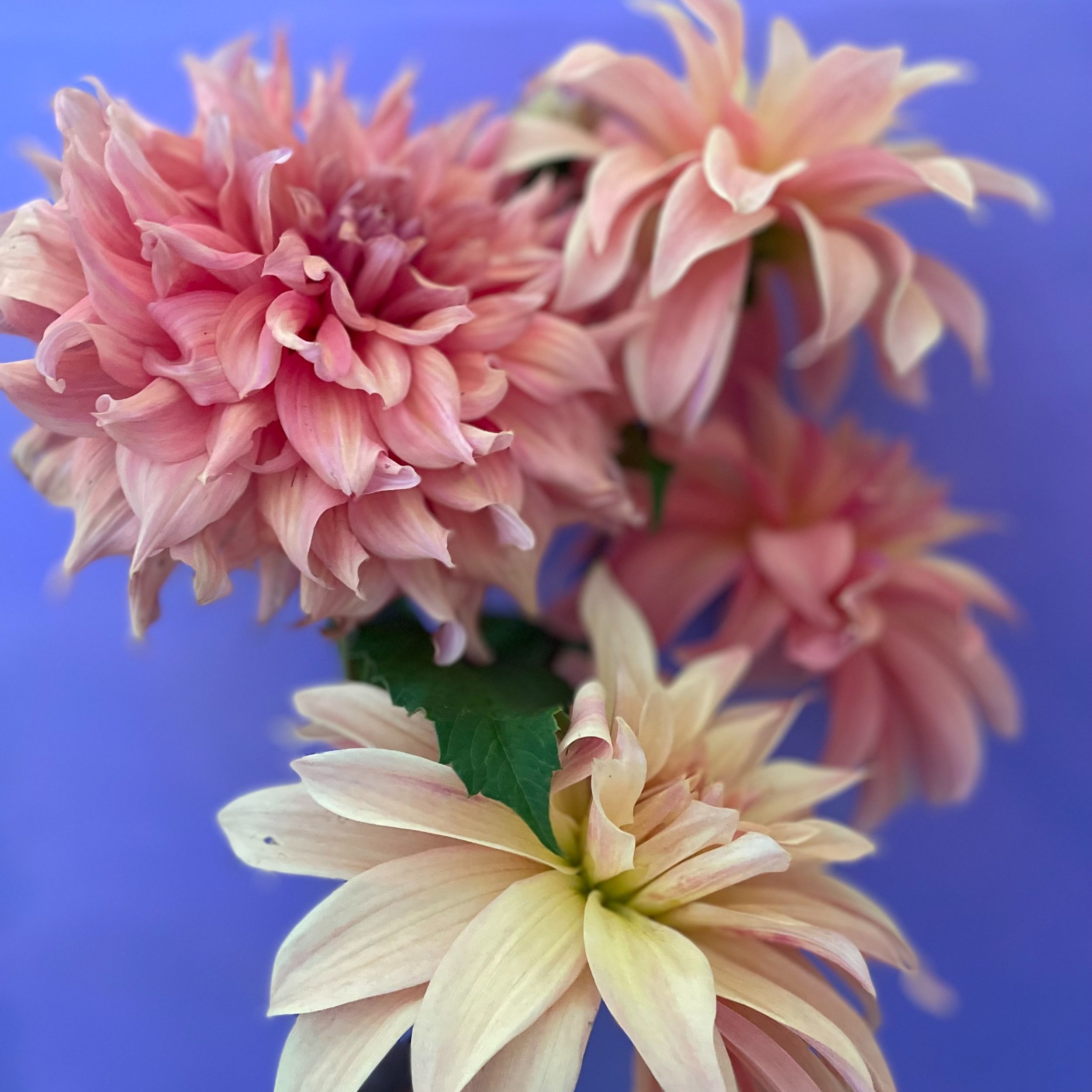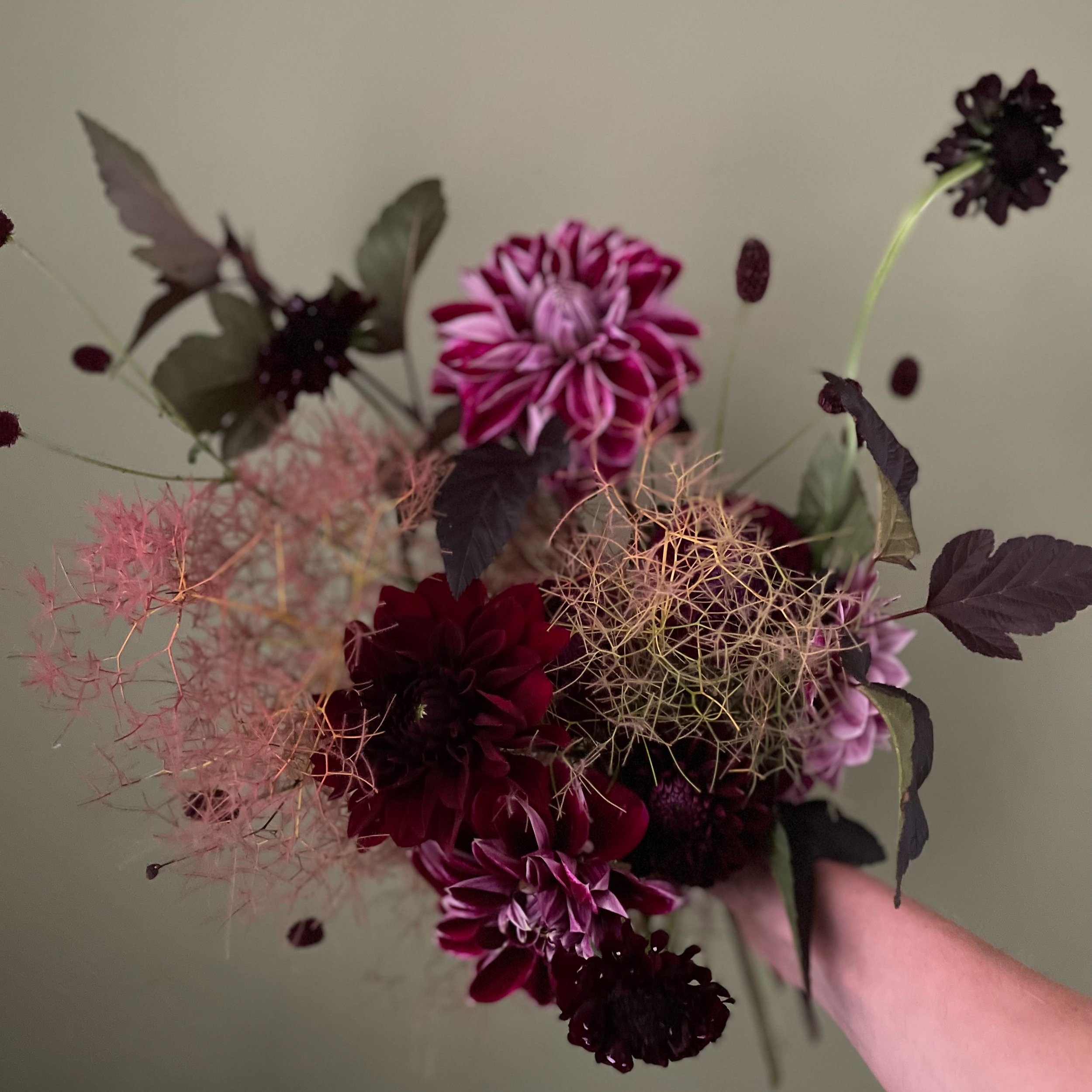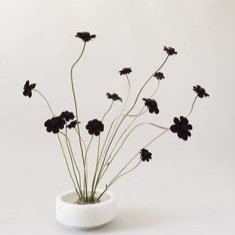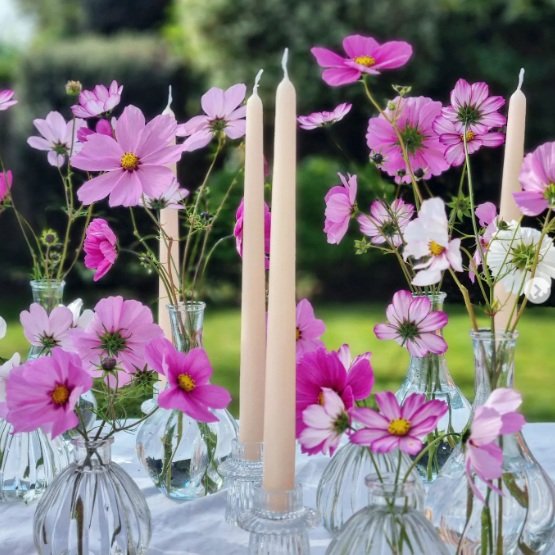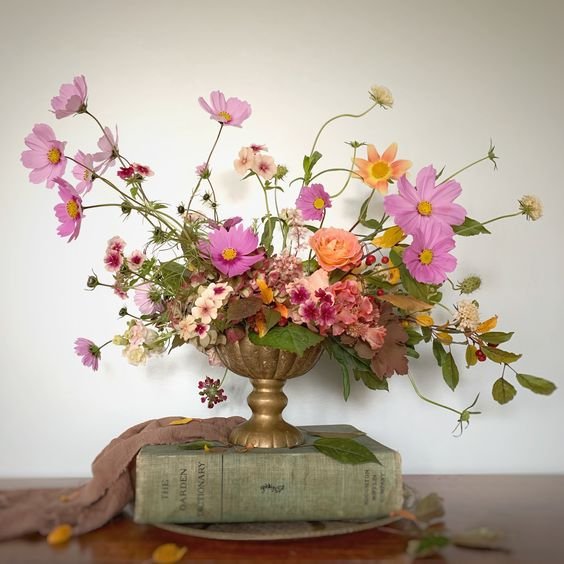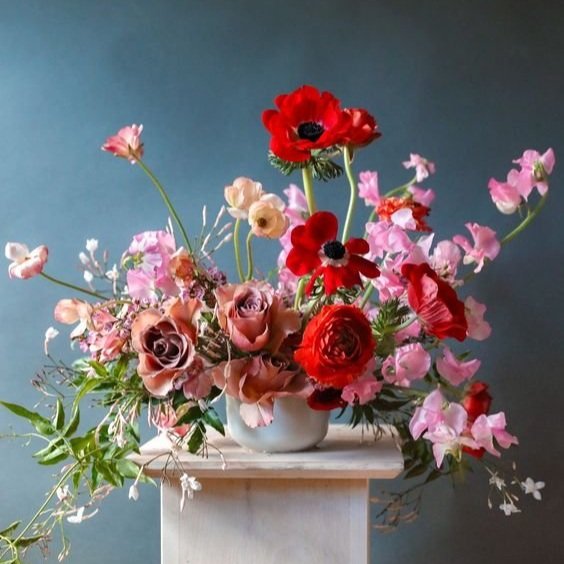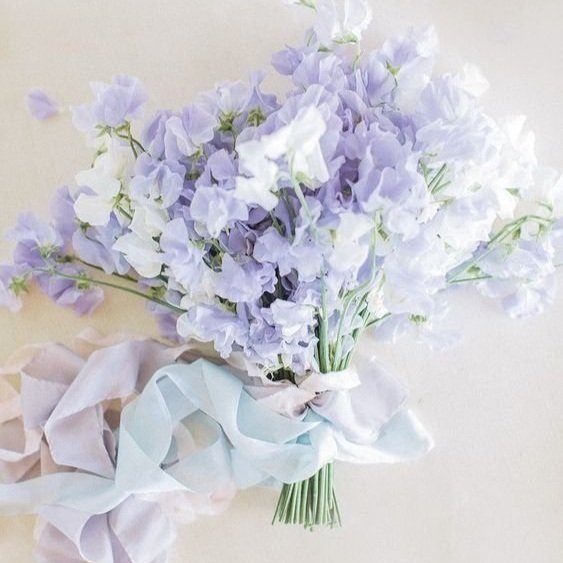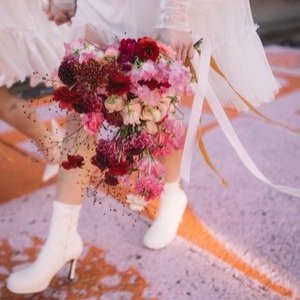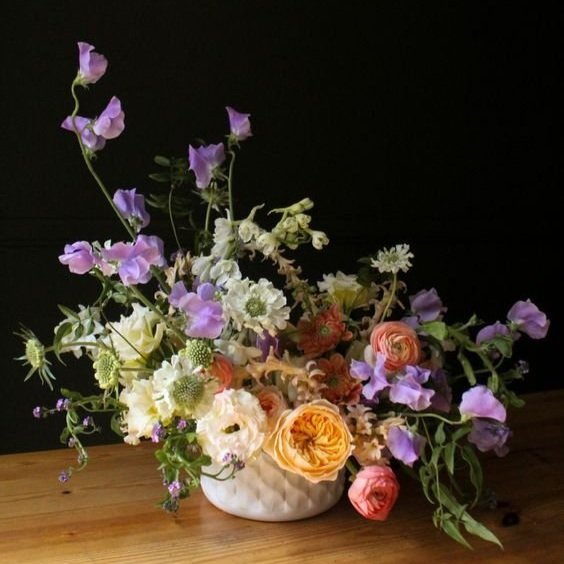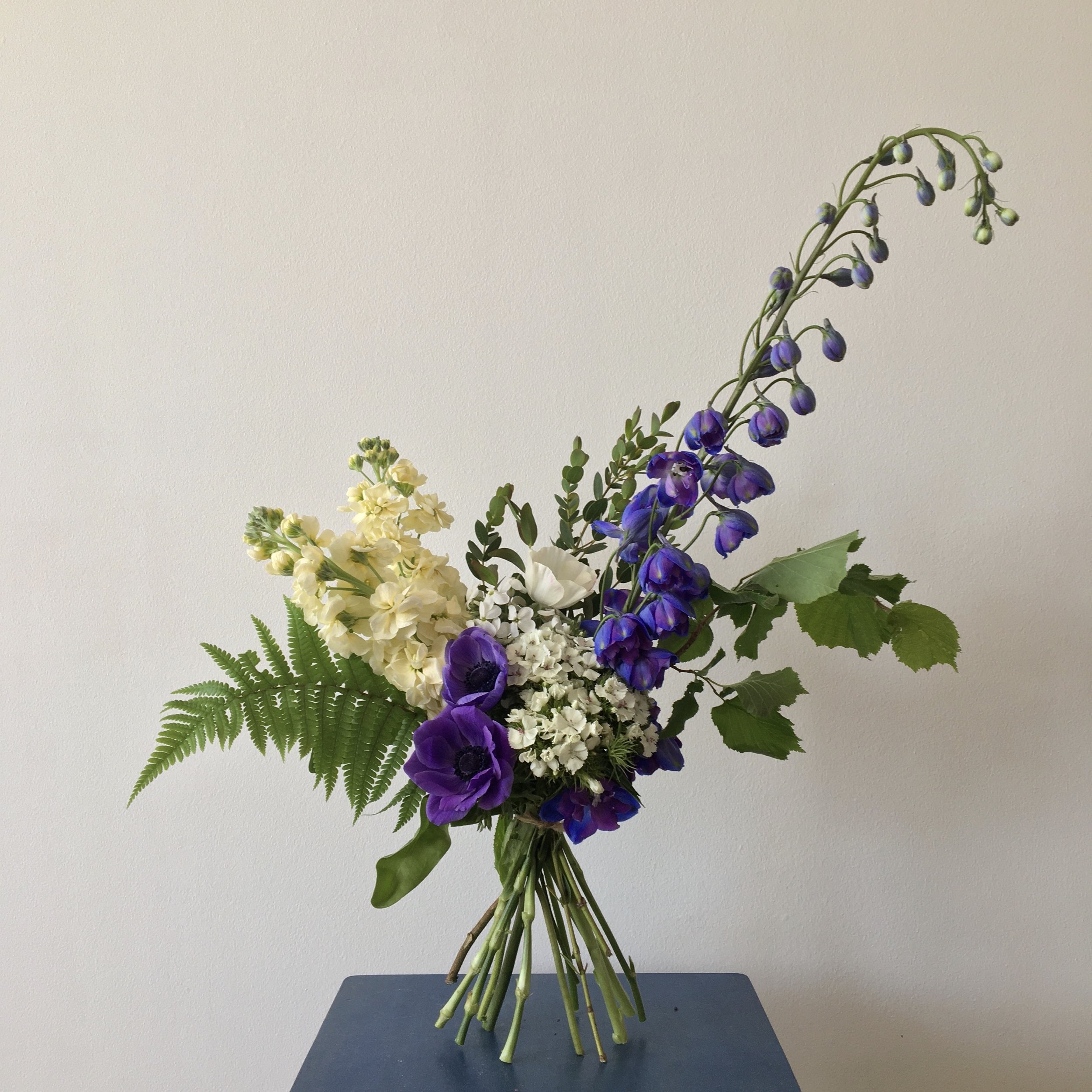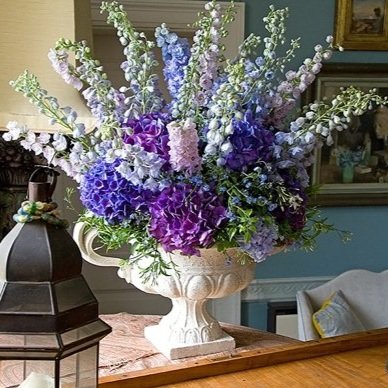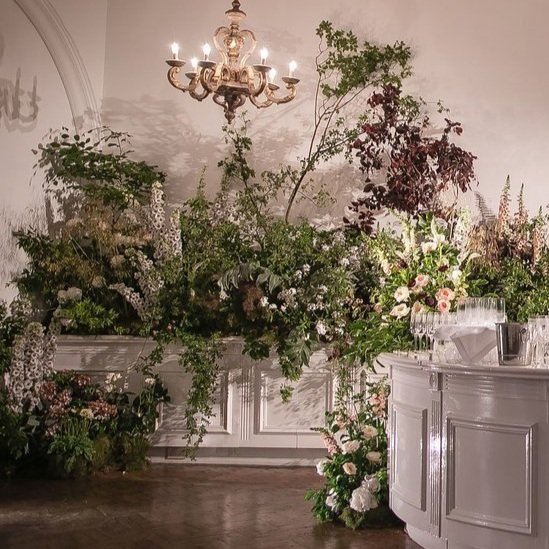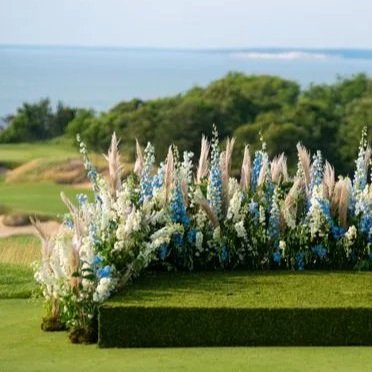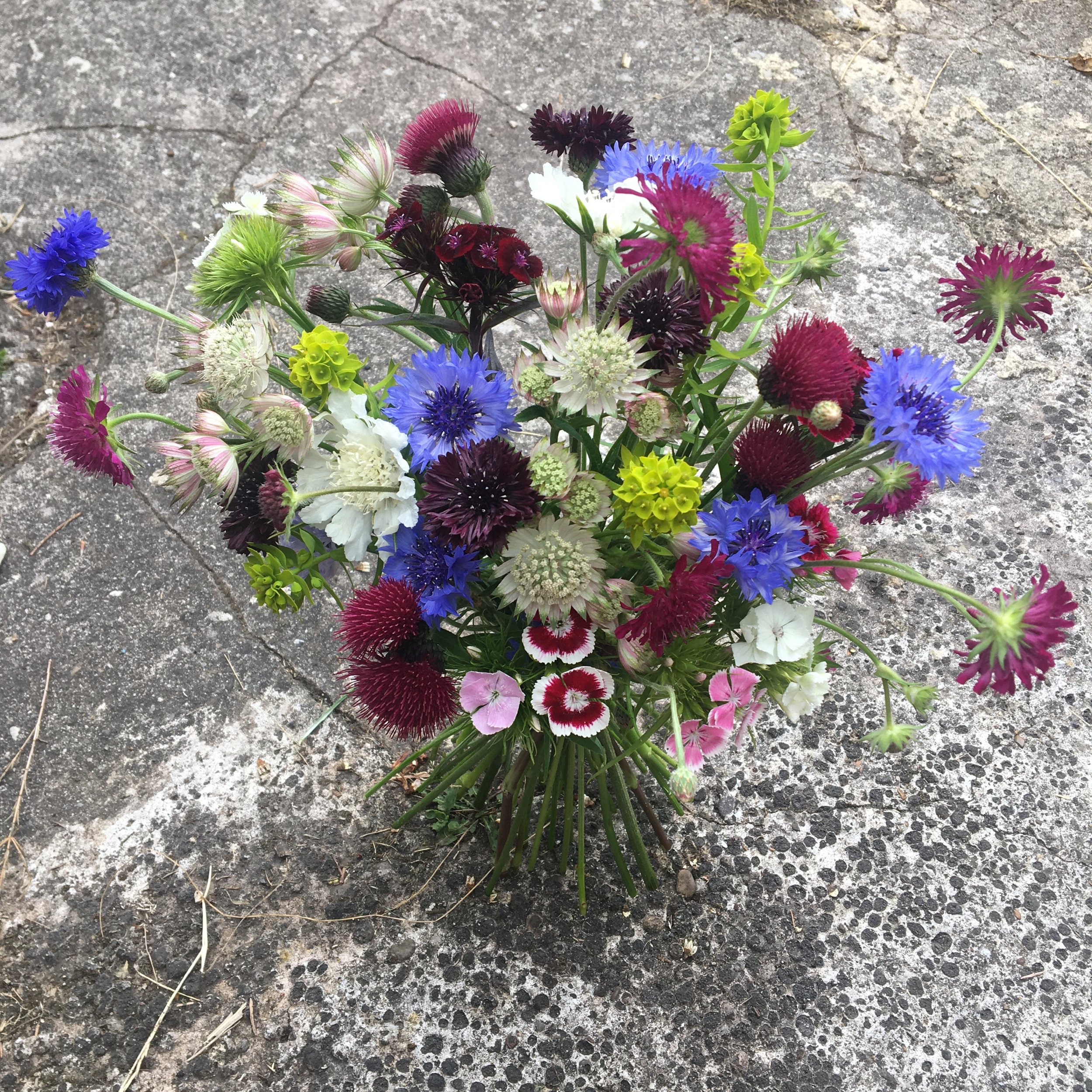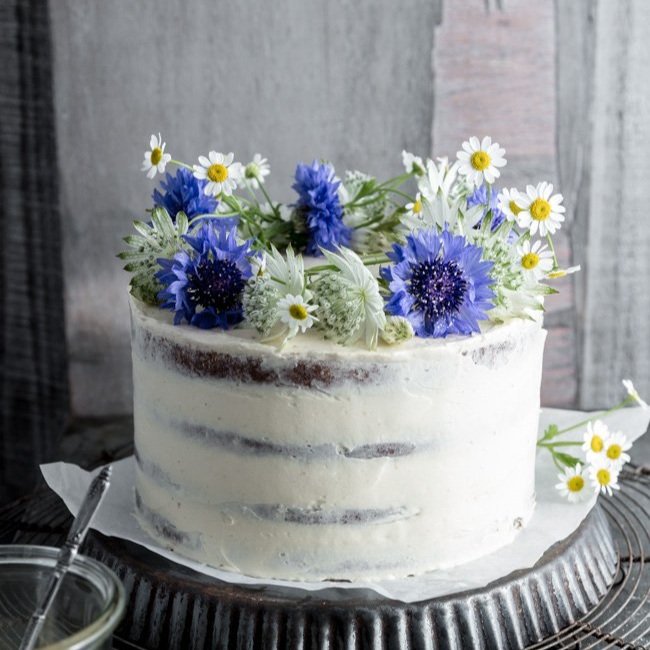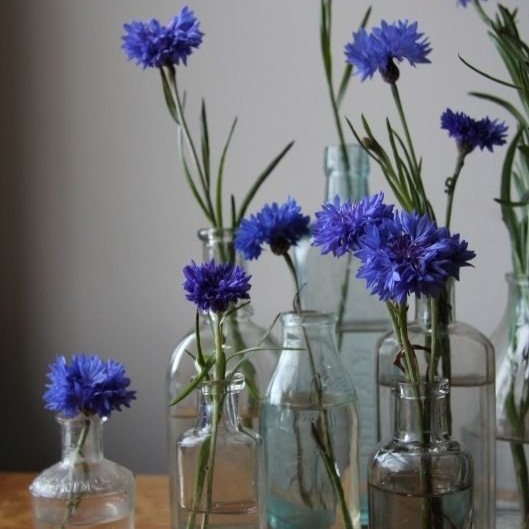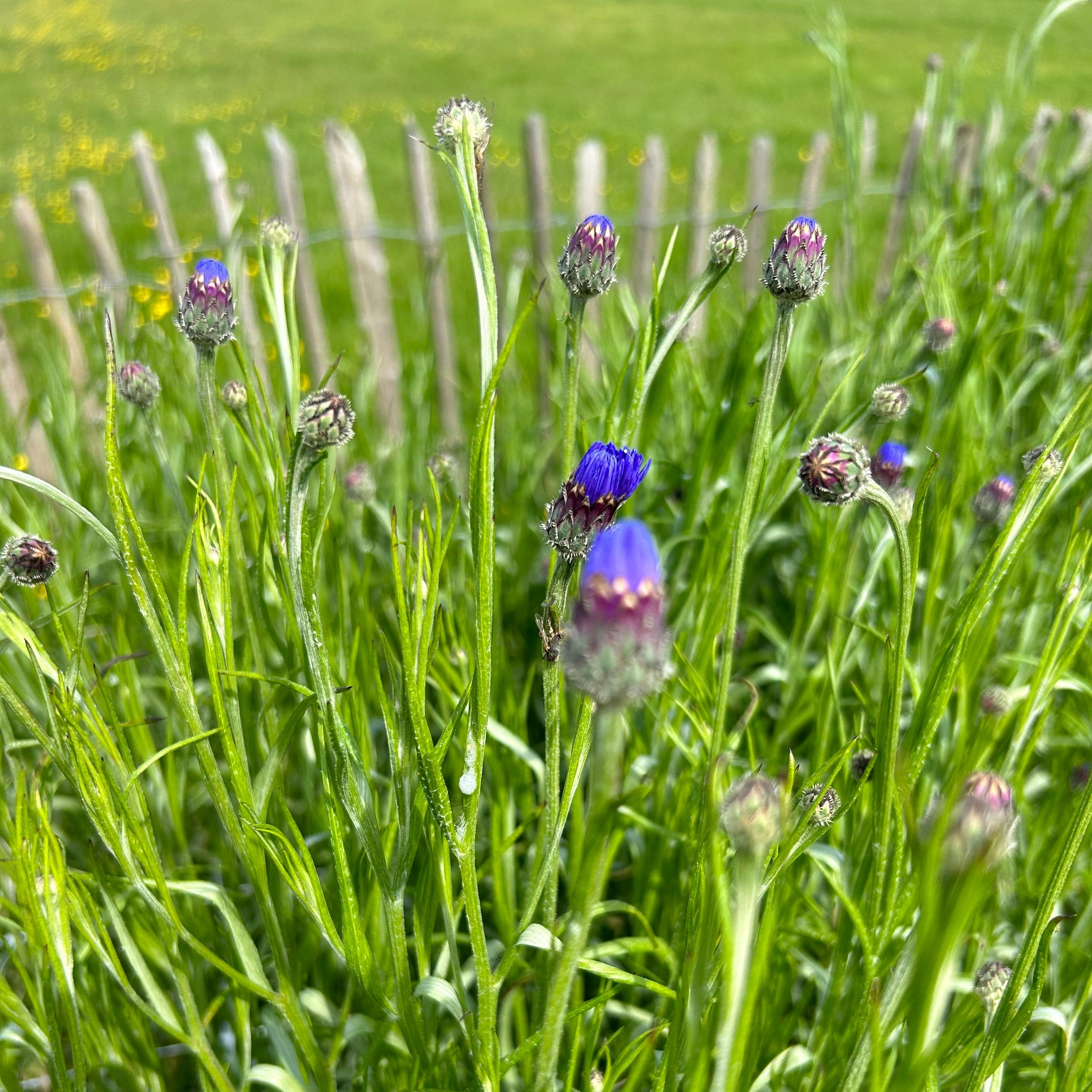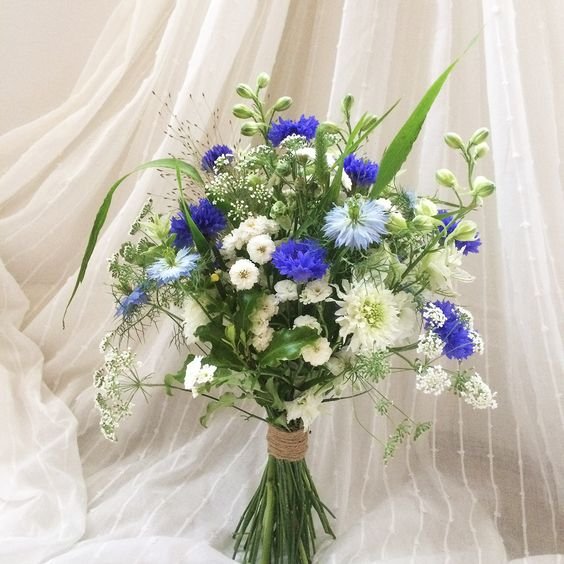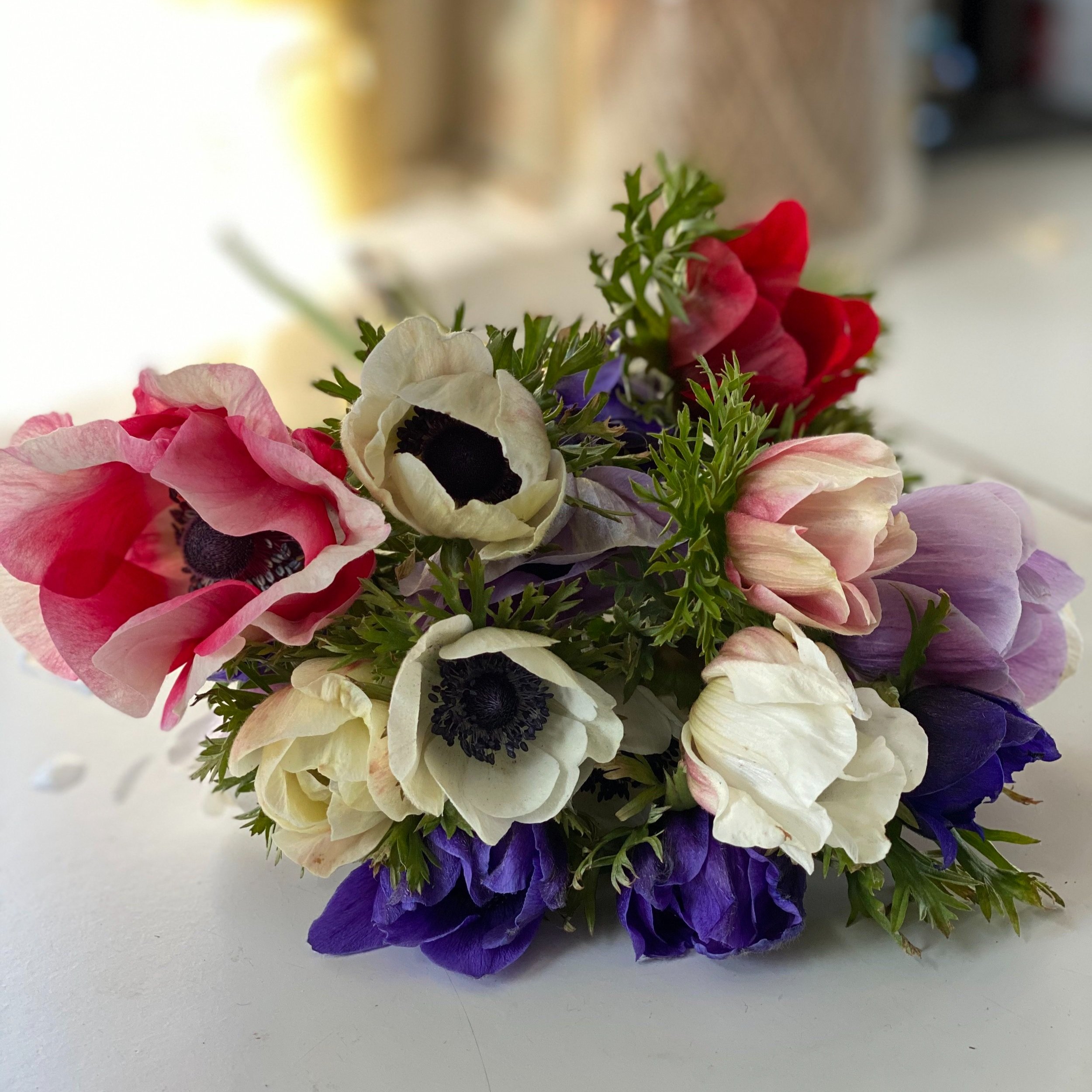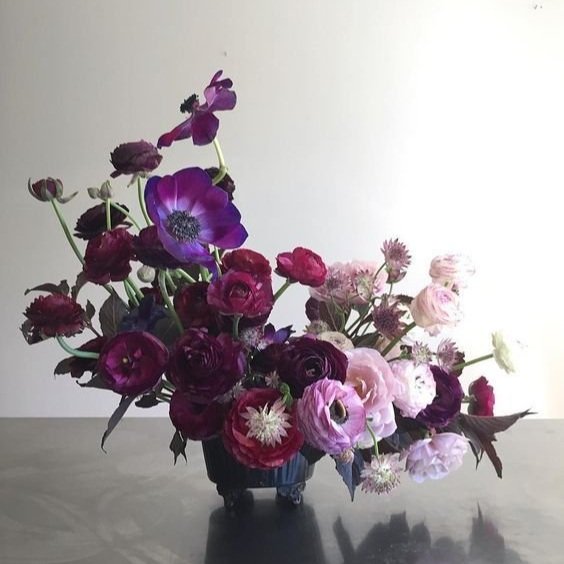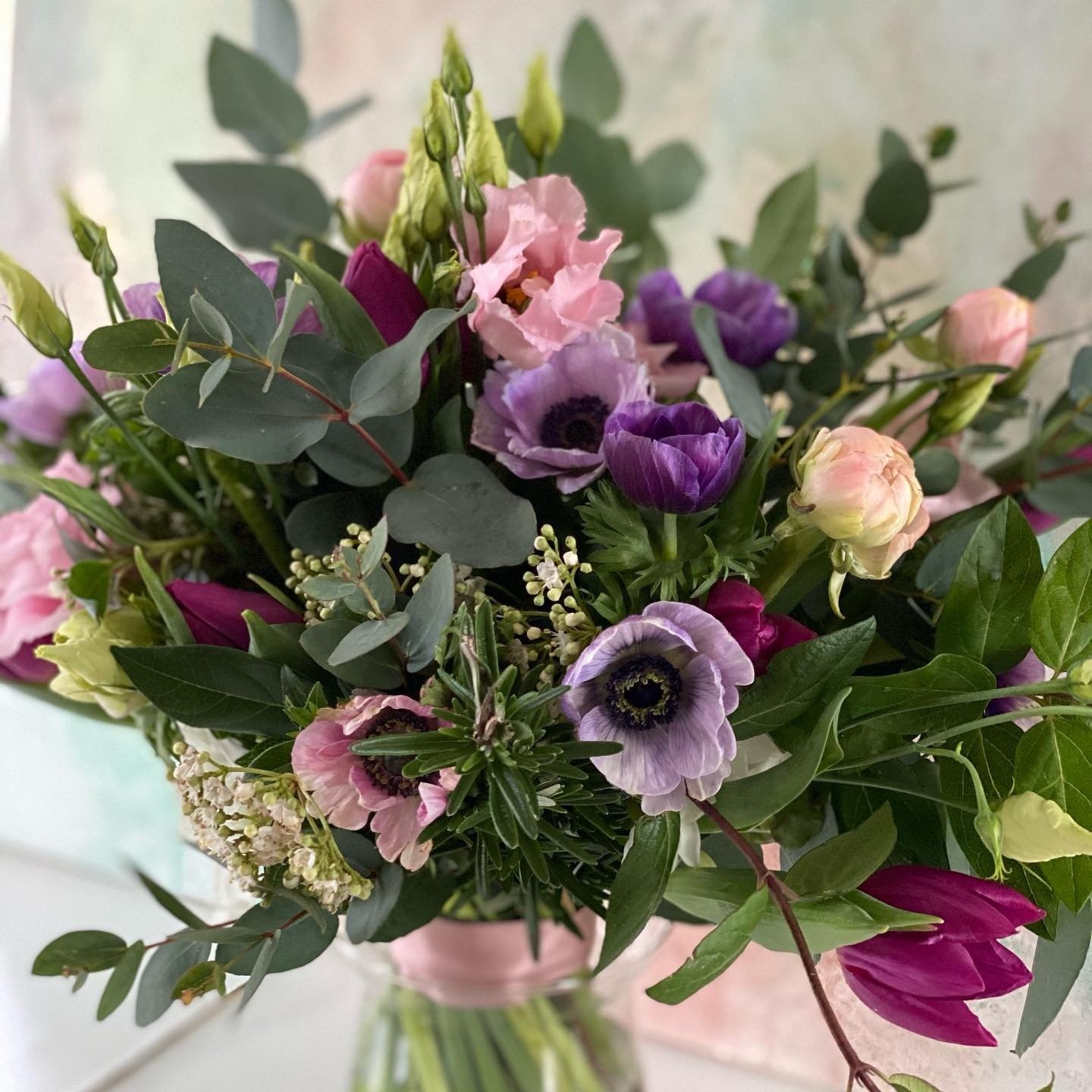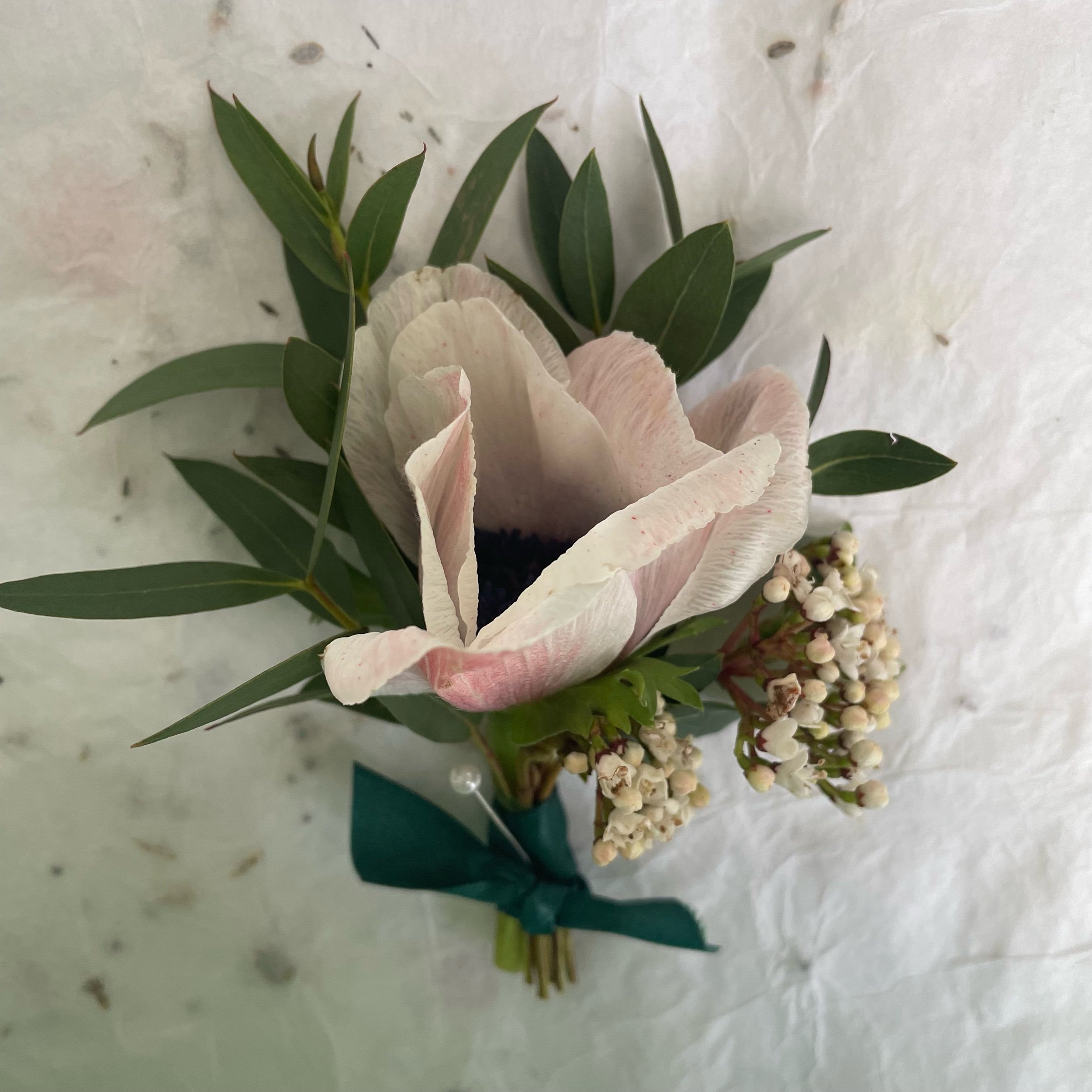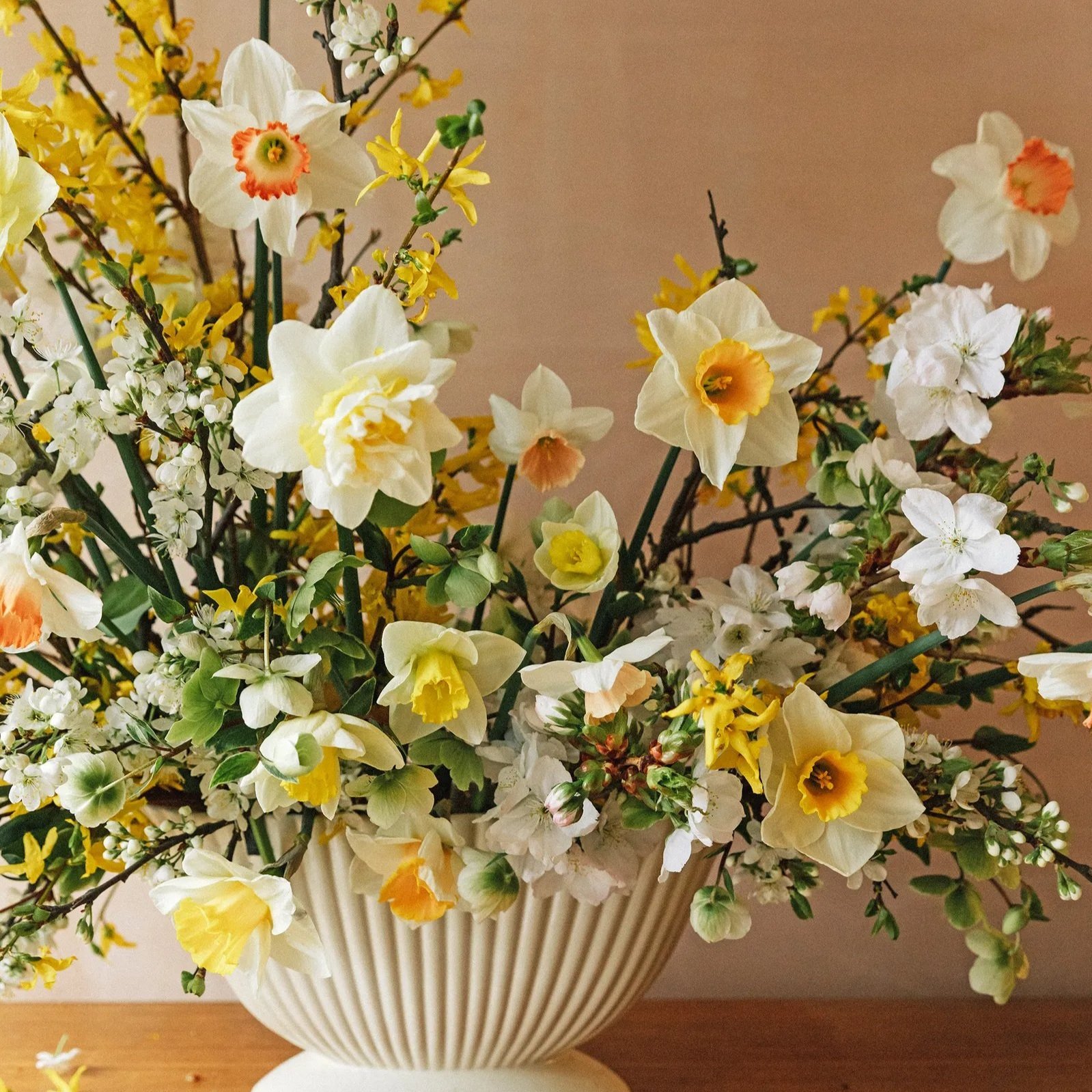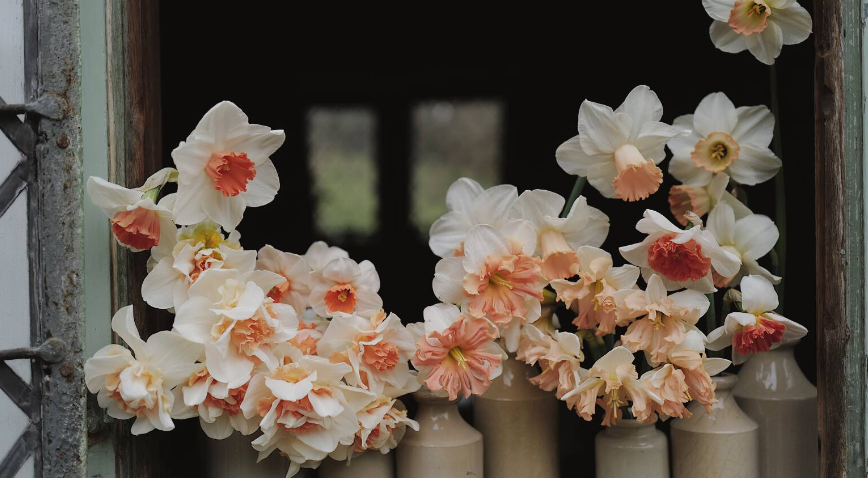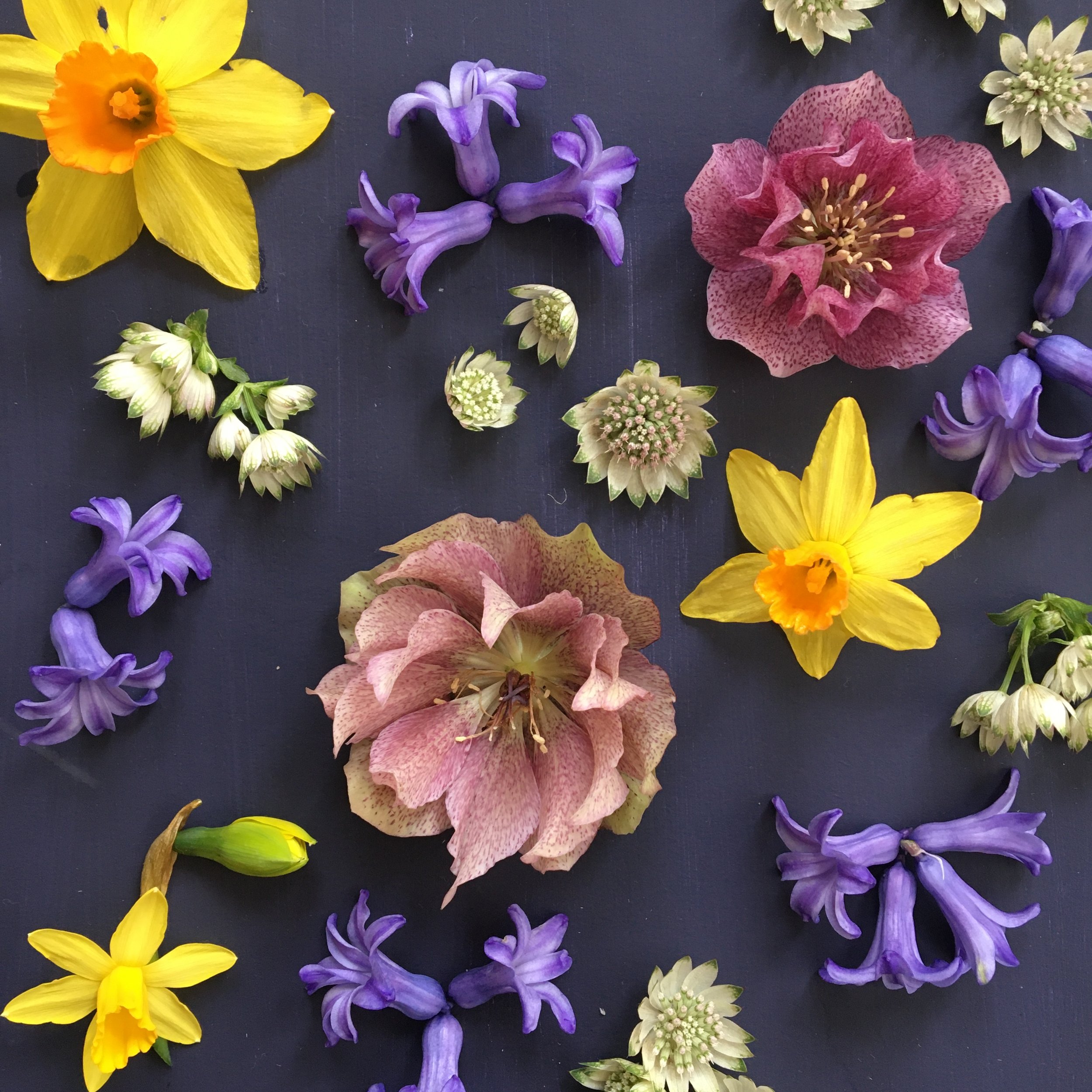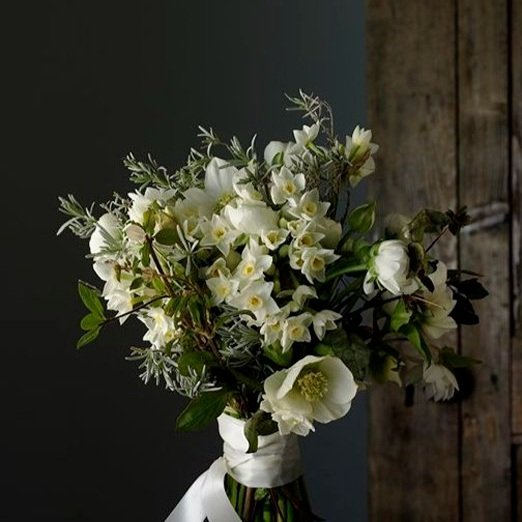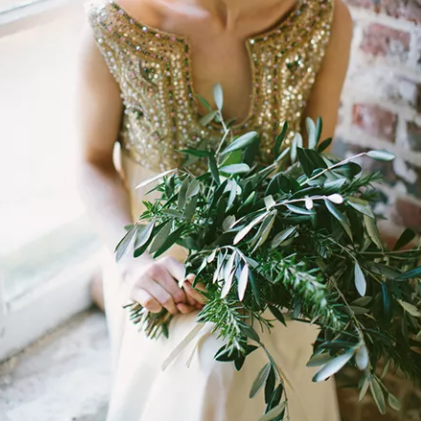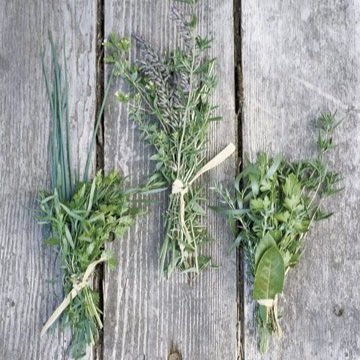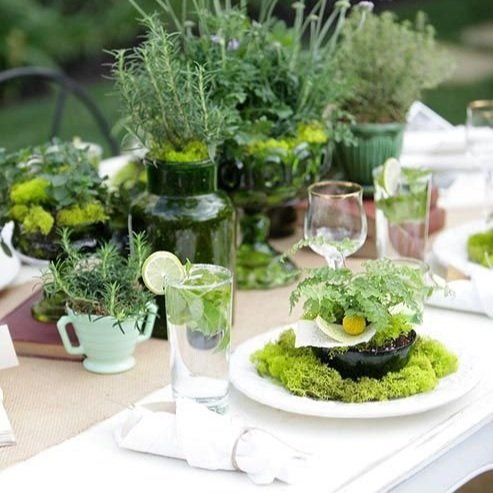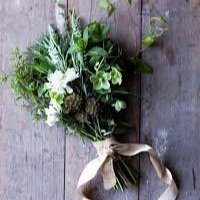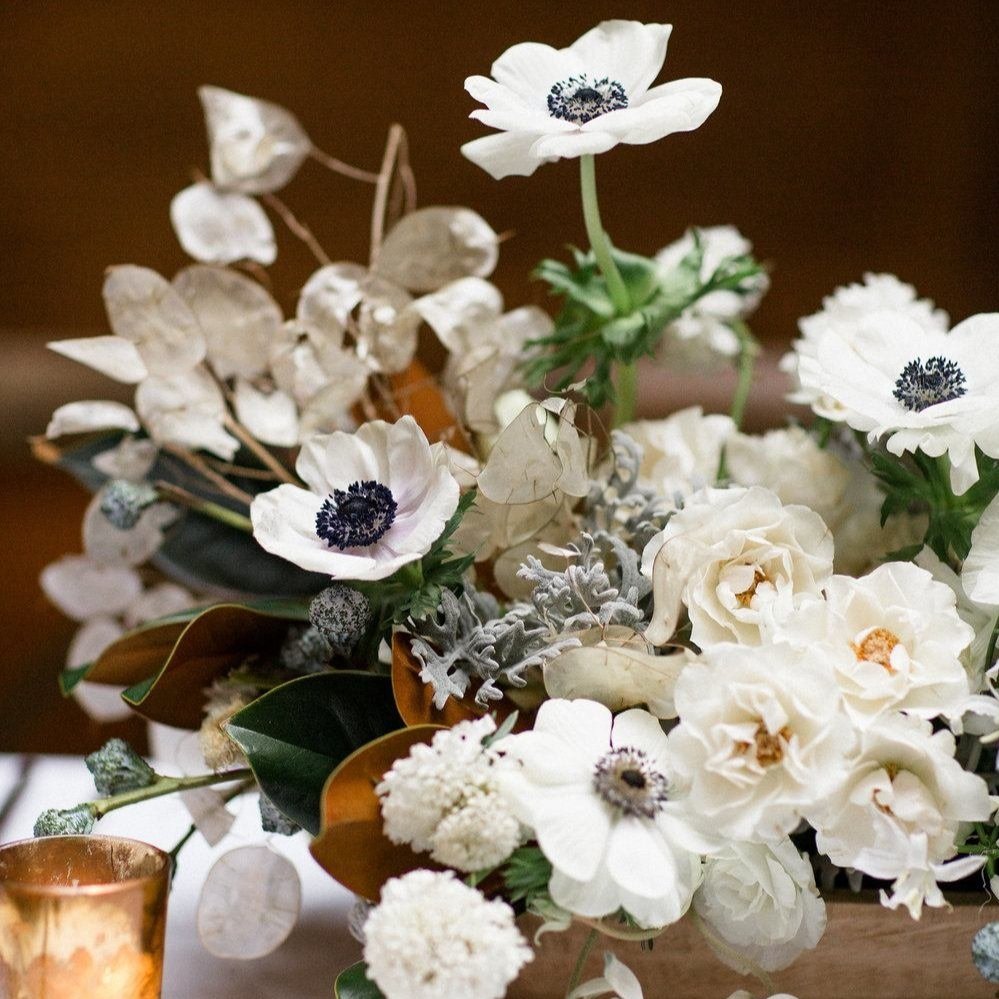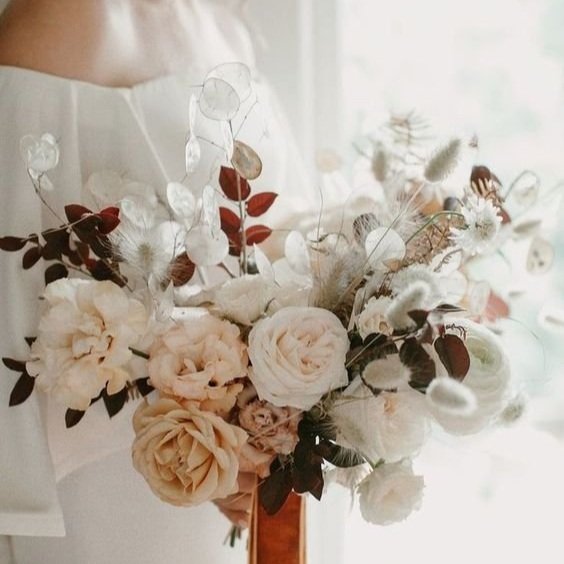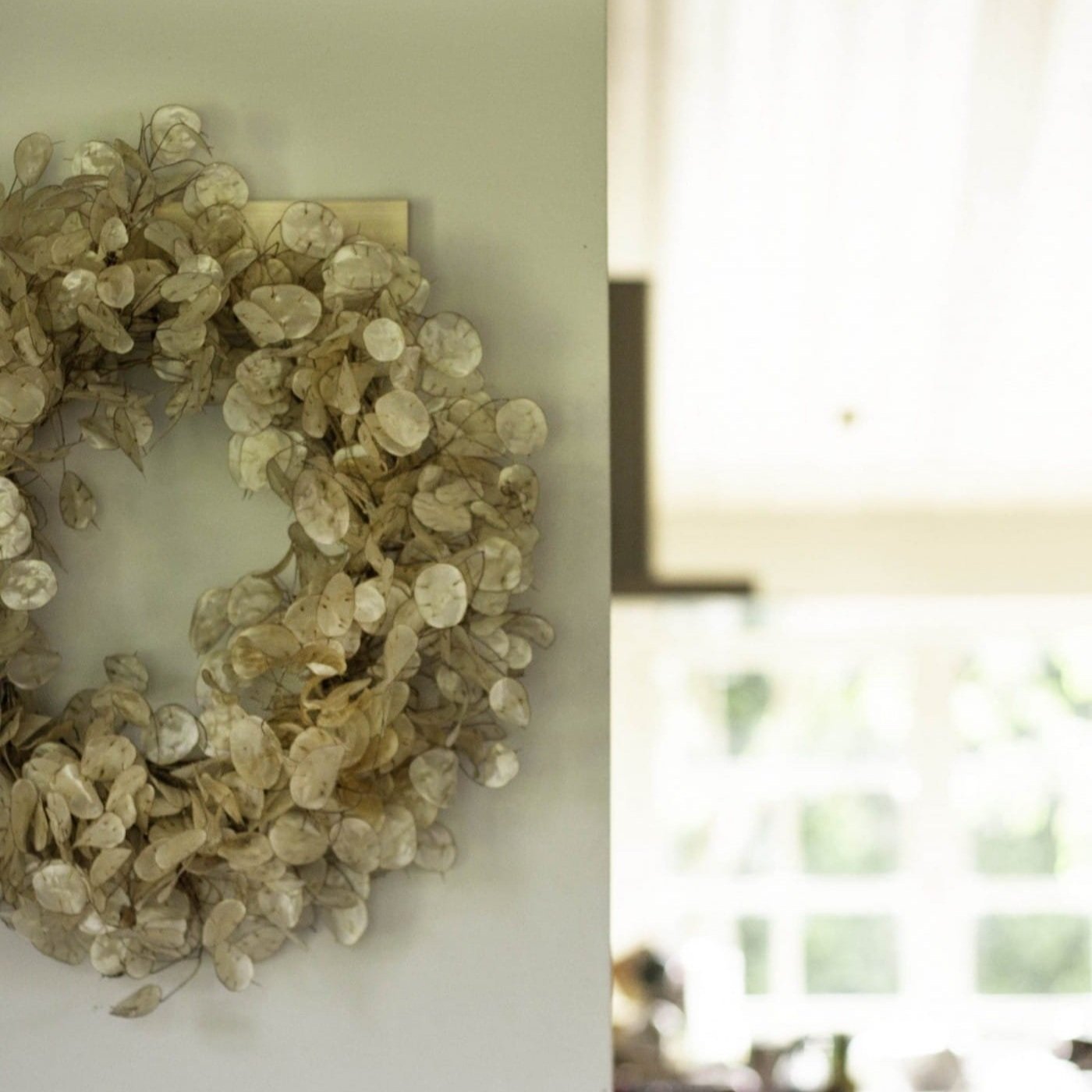December Spotlight: Bay
Ellie Jones
In our work here at Bouquets for Days we eagerly embrace the natural beauty that surrounds us and becomes seasonally available throughout the year. One particularly versatile and enchanting foliage to reach for as winter properly sets in is the humble bay leaf. Primarily known for its culinary uses, the bay leaf also possesses a unique charm that makes it an excellent choice for floral displays.
Bay leaves, derived from the aromatic Bay Laurel tree, bring a touch of sophistication and, most importantly, a delightful fragrance to any arrangement. The glossy, dark green leaves are not only visually appealing but also carry a subtle, spicy aroma that can infuse a room with warmth and character. Working bay leaves into floral designs adds depth and complexity, making it an ideal choice for seasonal displays in December.
Delicate branches of Bay have been a staple of Bouquets for Days Christmas Wreaths in recent years. When cut fresh, the rich green hue of these leaves acts as a neutral backdrop, allowing other floral elements to pop and take centre stage and then as December progresses, the leaves gradually dry out and bring a golden hue to wreath arrangements.
The abundance of bay laurel trees in the UK makes it an eco-friendly choice, reducing the carbon footprint associated with importing exotic foliage, another clear win from our perspective!
The use of bay as foliage is a brilliant way to harness the beauty of this season. Its accessibility, versatility, durability, and sustainable nature make it a standout choice to include in your wedding or event.
If you’re thinking about flowers for a December wedding or event and you would like to discuss seasonal availability then get in touch and keep an eye on the Bouquets for Days Instagram for more seasonal ingredients making an appearance throughout the month.

